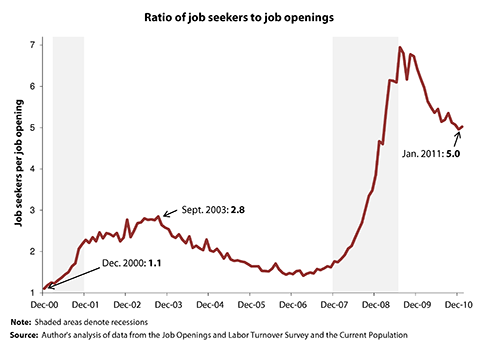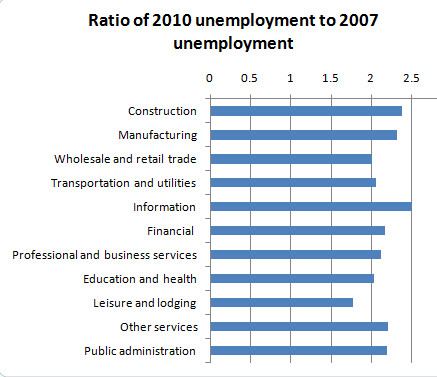March 17, 2011
Earlier this week, my colleague John Schmitt and I released a paper, “Deconstructing Structural Unemployment,” highlighting some additional data that counters the argument coming from some quarters that what we are seeing today is a dramatic increase in structural rather than cyclical unemployment. We used data from the Bureau of Labor Statistics’ Displaced Workers Survey to show that even though construction workers were more likely to become displaced over the three years 2007-2009, they were strikingly similar to other workers in terms of finding new work, being geographically mobile, and taking pay cuts in new jobs. We also looked at whether or not “housing lock” – immobility caused by decreases in housing prices – might be contributing to structural unemployment, and found that the effects are miniscule and, regardless, not caused by structural problems in the labor market.
Since this line of reasoning does not seem to be going away, we thought it would be useful to discuss some other research on structural unemployment. For some time now, Heidi Shierholz of the Economic Policy Institute has been following another dataset from the BLS, the Job Openings and Labor Turnover Survey. What she finds is not consistent with a story of structural unemployment either (emphasis in original):
The ratio of unemployed workers to job openings was thus 5.0-to-1 in January, unchanged from the revised December ratio. January marks 23 months that the “job seeker’s ratio” has been at or above 5-to-1. By comparison, the highest it got in the early 2000s downturn was 2.8-to-1. A job seeker’s ratio of 5-to-1 means that for 4 out of 5 unemployed workers, there simply are no jobs.

However, as Shierholz (with colleagues Lawrence Mishel and Kathryn Edwards) points out in a recent paper, “a structural shift would still be evident if this shortfall was concentrated in a few specific industries.” Unfortunately for the advocates of structural unemployment, this does not appear to be the case. Paul Krugman has the relevant graph for this:







